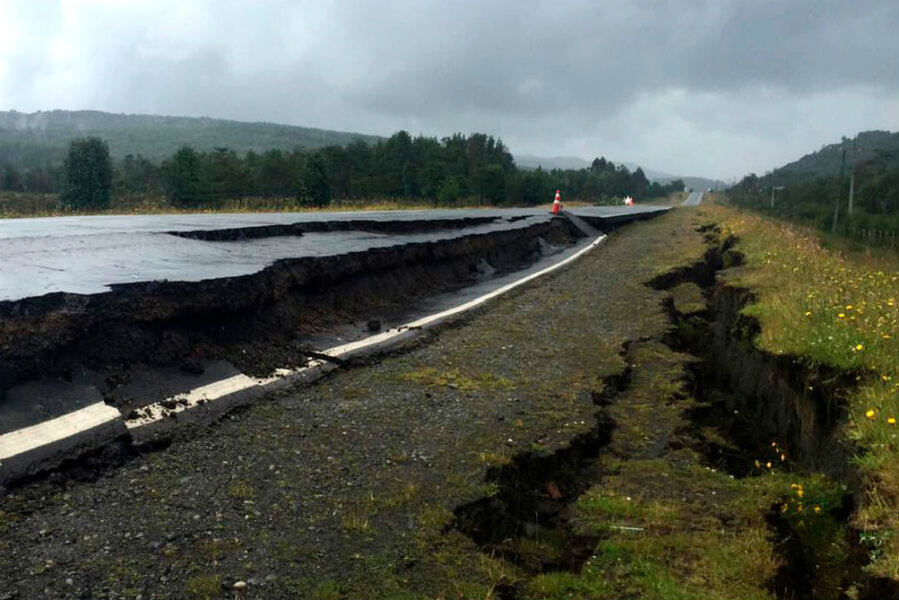Magnitude 7.6 Christmas Day quake hits off coast of Chile
Loading...
A magnitude 7.6 earthquake struck off the coast of southern Chile on Sunday, prompting evacuations and causing minor damage along a coastal region popular with tourists.
The quake struck about 25 miles (40 kilometers) southwest of Quellón, a port city on Chiloé Island in the Los Lagos region. Some roads were reported damaged, and thousands were temporarily evacuated from coastal areas across Los Lagos.
Chile is no stranger to destructive and sometimes deadly earthquakes. But despite the powerful nature of the Sunday event, there have been no reports of any major damage or fatalities in the area. The main earthquake, which was followed by dozens of weaker aftershocks, concentrated the brunt of the destruction on highways and bridges, but most structures were left intact. Fears of a tsunami prompted warnings for areas within 1,000 km (621 miles) of the epicenter of the quake, but those warnings were downgraded within hours.
"There was a lot, a lot of movement here, but besides that nothing of note, there weren't houses falling," Alamiro Vera, the owner of a hotel in Quellón, told Reuters. "It was just scary, and some things inside fell."
The offshore quake was relatively shallow, at a depth of about 21.5 miles (34.6 km), according to the US Geological Survey (USGS). In order to avoid the threat posed by a possible tsunami, an alert was issued by Chile's National Emergency Office (ONEMI), mandating the evacuation of nearly 5,000 people from the affected region. But about three hours after the quake struck, ONEMI lifted both the evacuation order and the tsunami watch, allowing the evacuees to return home.
Chile is located in a particularly geologically active zone known as the "Ring of Fire," a 25,000-mile horseshoe of faults along the edges of tectonic plates. About 90 percent of all earthquakes in the world occur around the ring, according to National Geographic, and 75 percent of all active volcanoes can be found along its edge. The most powerful earthquake ever recorded – a 9.5 – occurred along the ring in Chile in 1960. Since 1973, Chile has experienced over a dozen earthquakes rated 7.0 or above on the scale, according to CNN.
But while most structures in Chile are built to resist these relatively common "Ring of Fire" quakes, the Sunday earthquake still packed an unexpected Christmas Day punch.
"I've lived for 10 years in the south and never felt something like that," one resident affected by the magnitude 7.6 earthquake told the BBC.
By Monday, many operations in the area appeared to have returned to normal, with an oil refinery in Bio Bio reporting normal operations, and airlines operating in Southern Chile avoiding major delays in the region. Various salmon farming operations reported little damage.
"Damage was limited, and neither fishing nor aquaculture activity will be affected by this event," José Miguel Burgos, the director of Chile's National Fish and Aquaculture Service, told Reuters.
The president of Chile, Michelle Bachelet, sent "much strength and encouragement to our countrymen affected by the quake" on her Twitter account.
This report contains material from Reuters.








